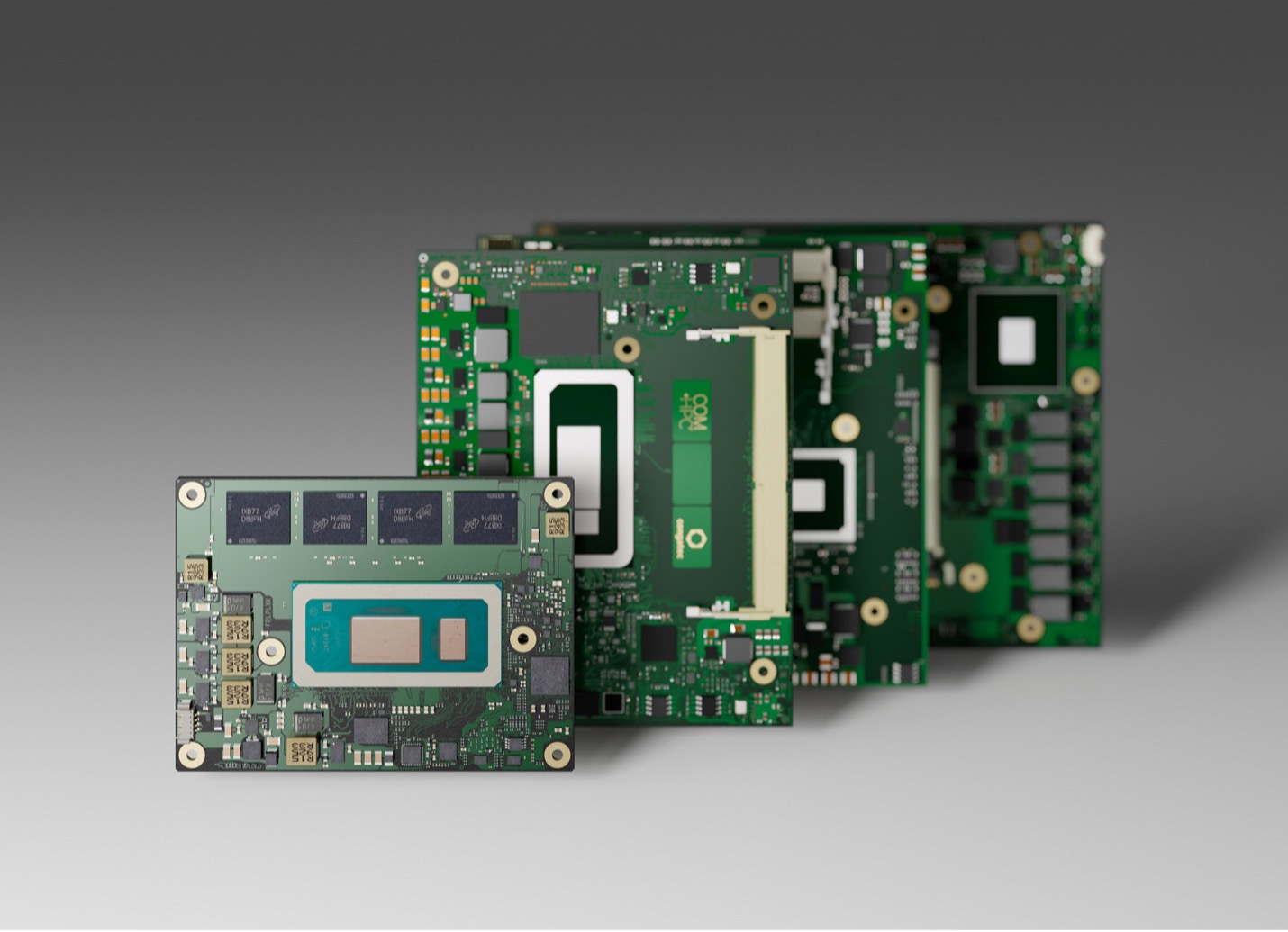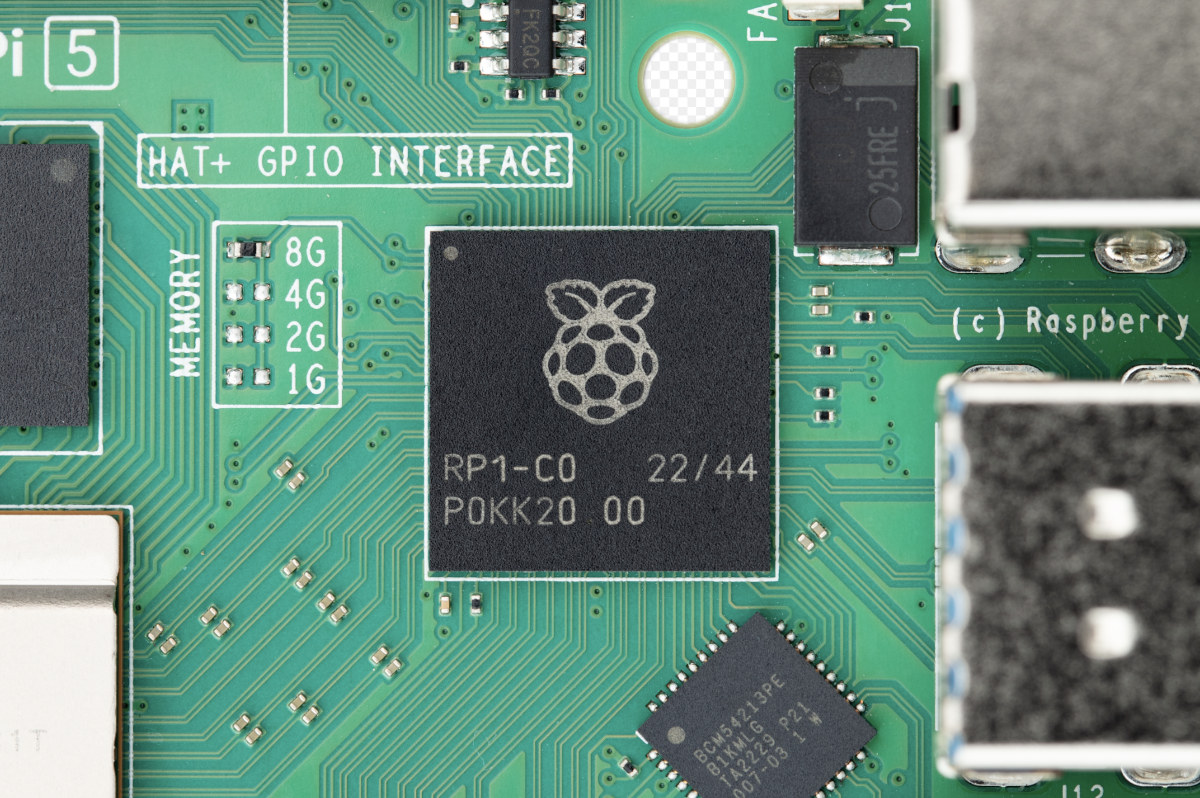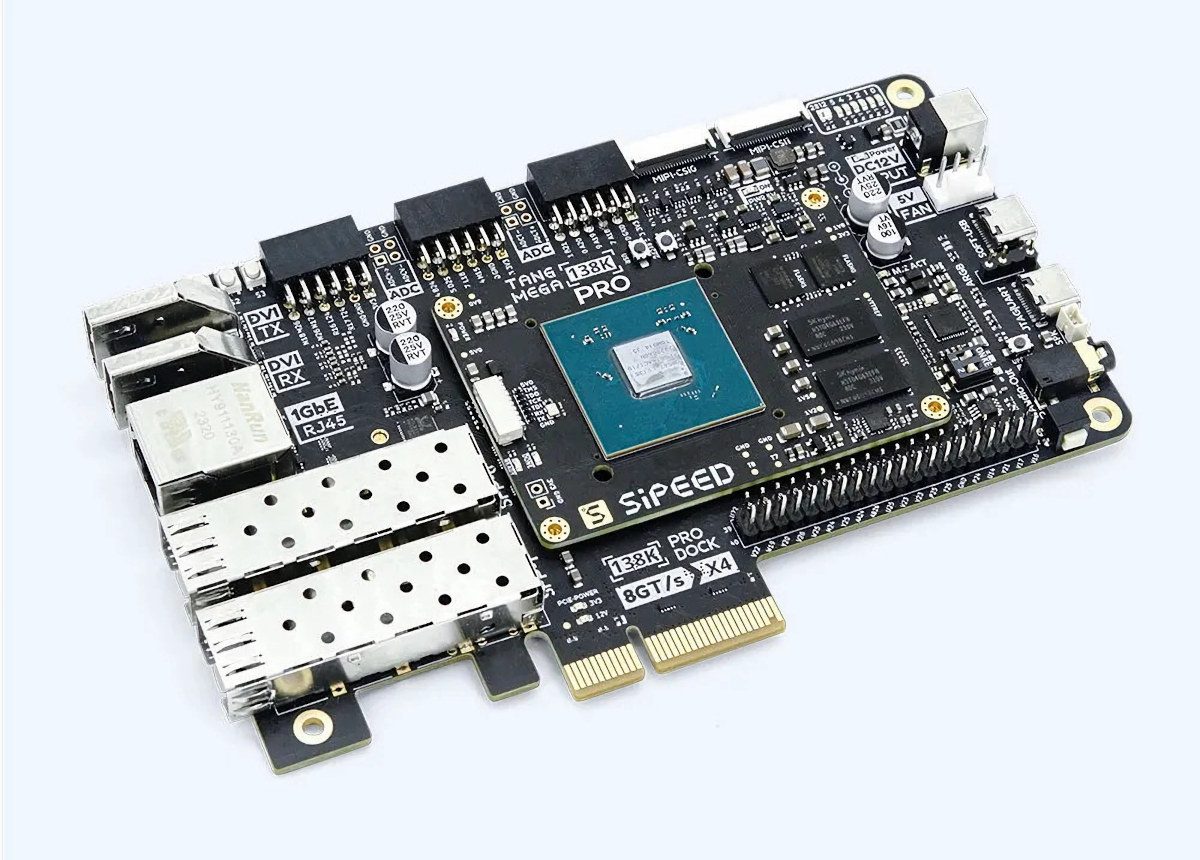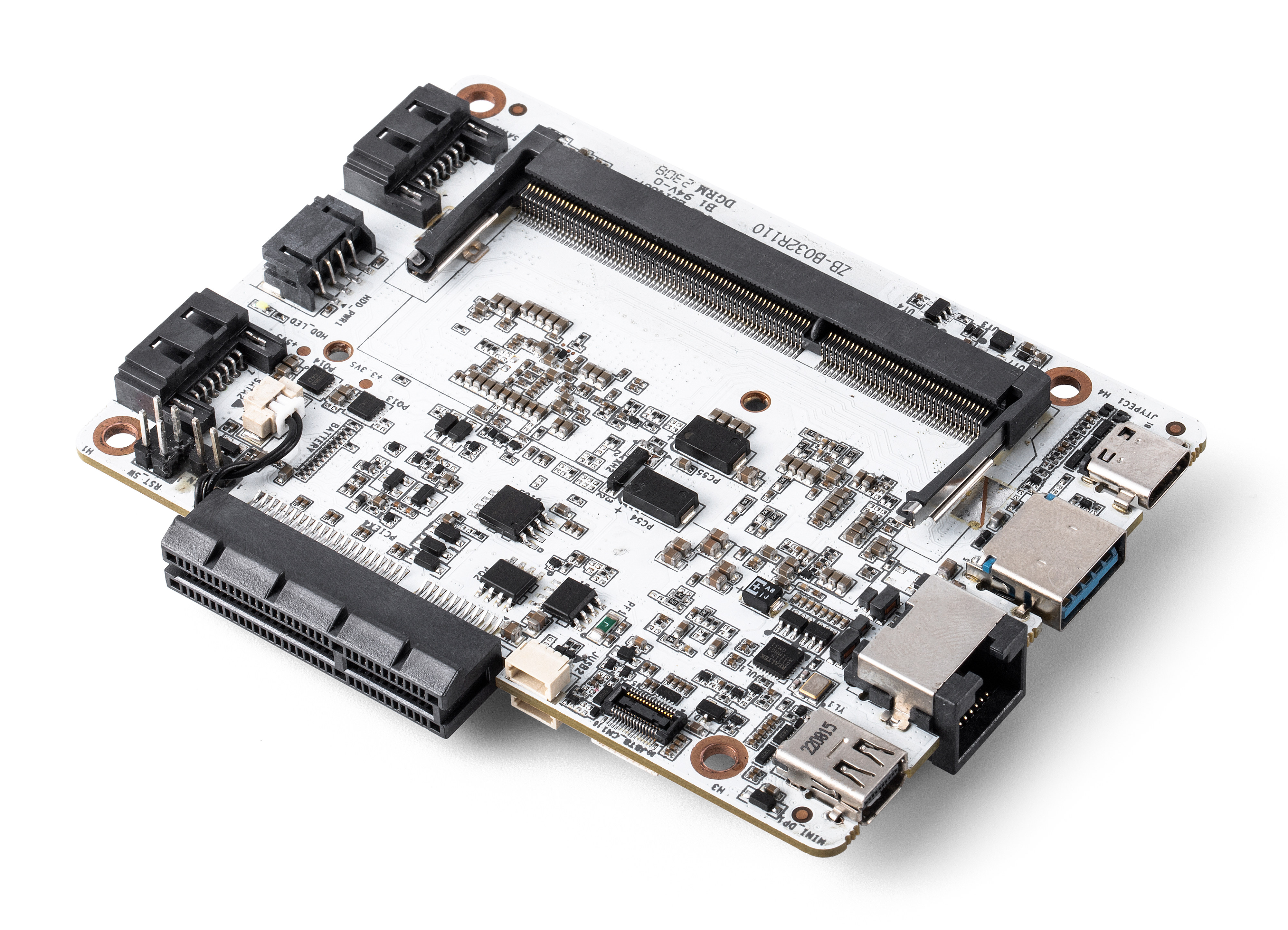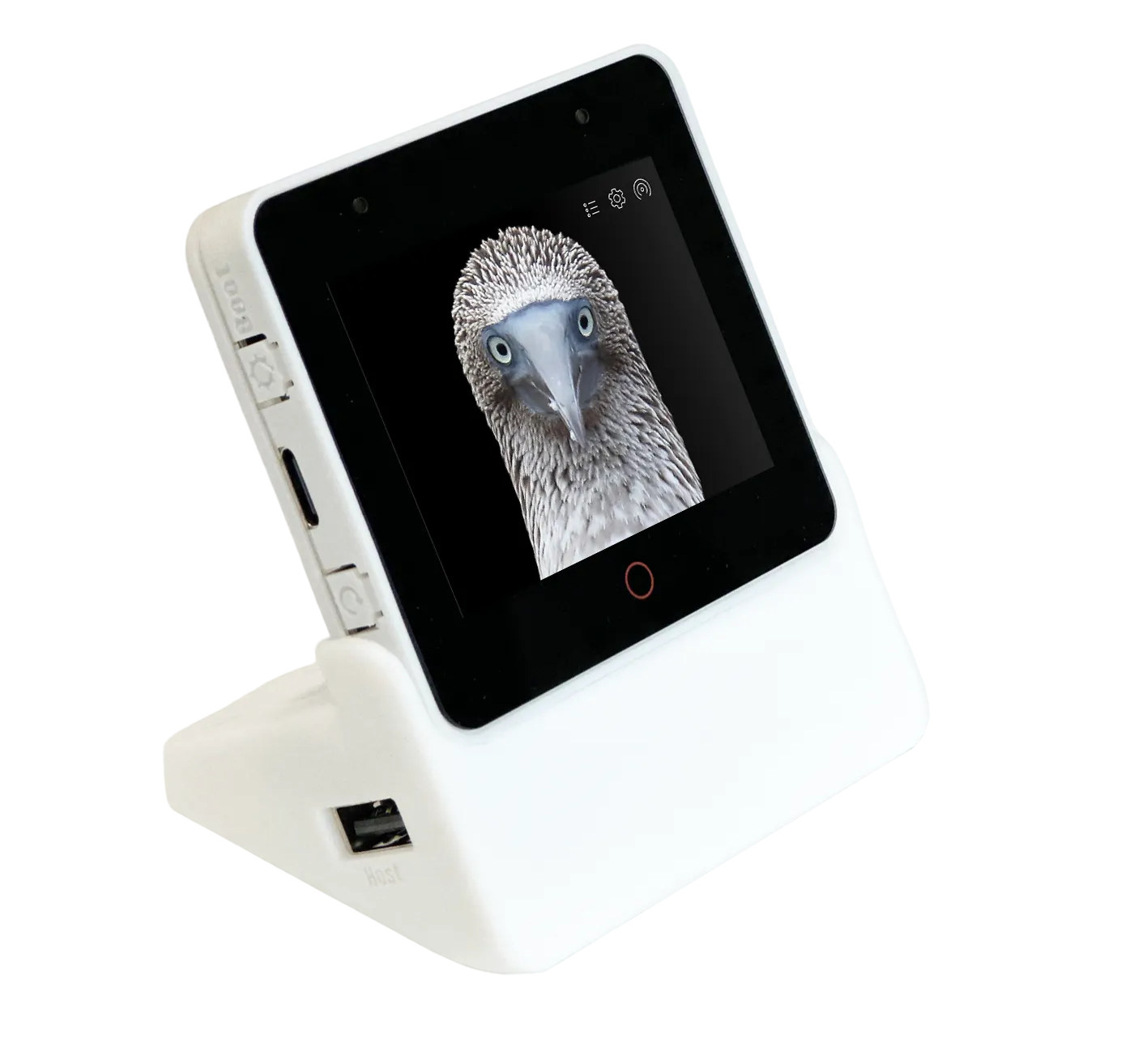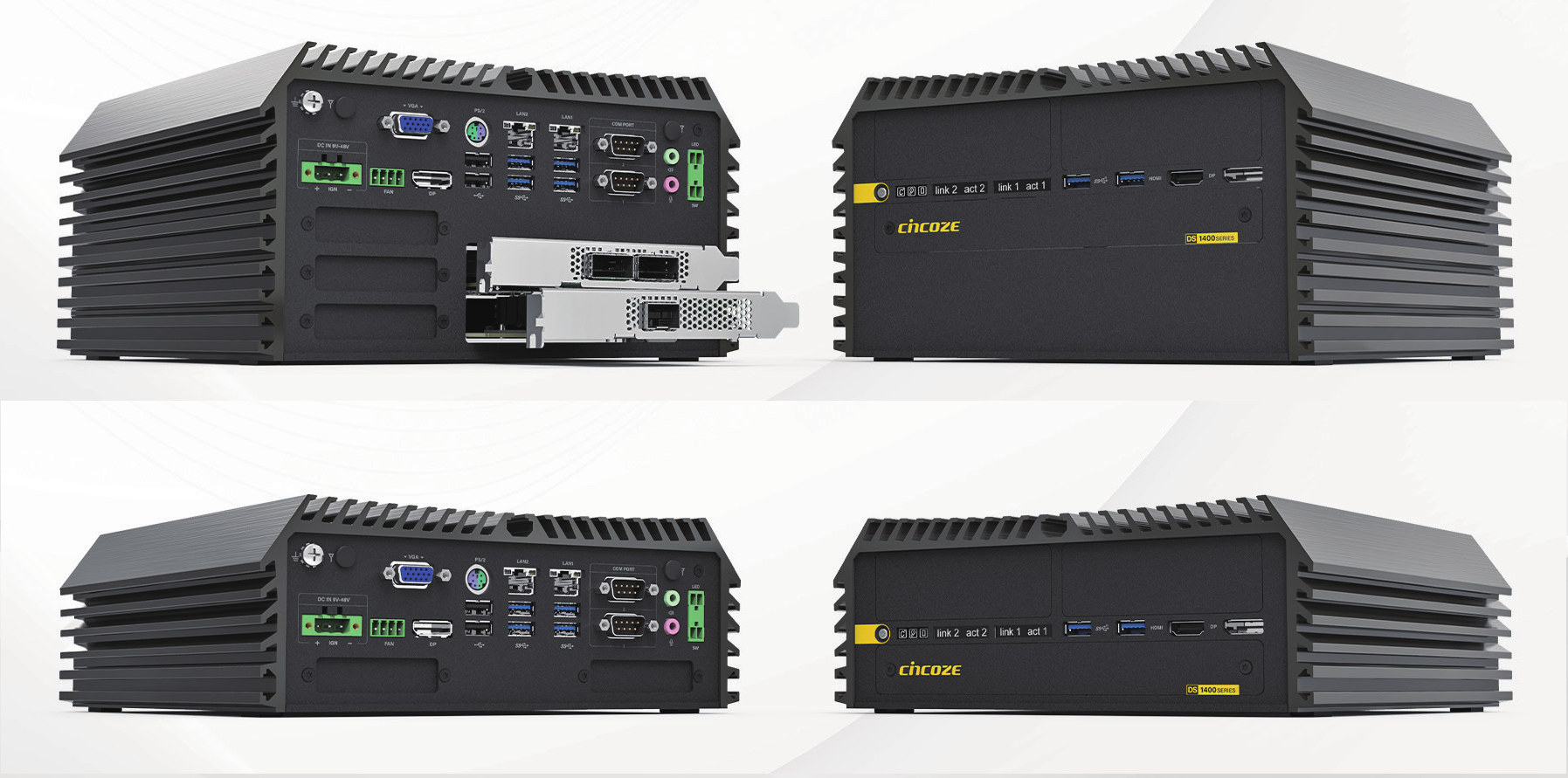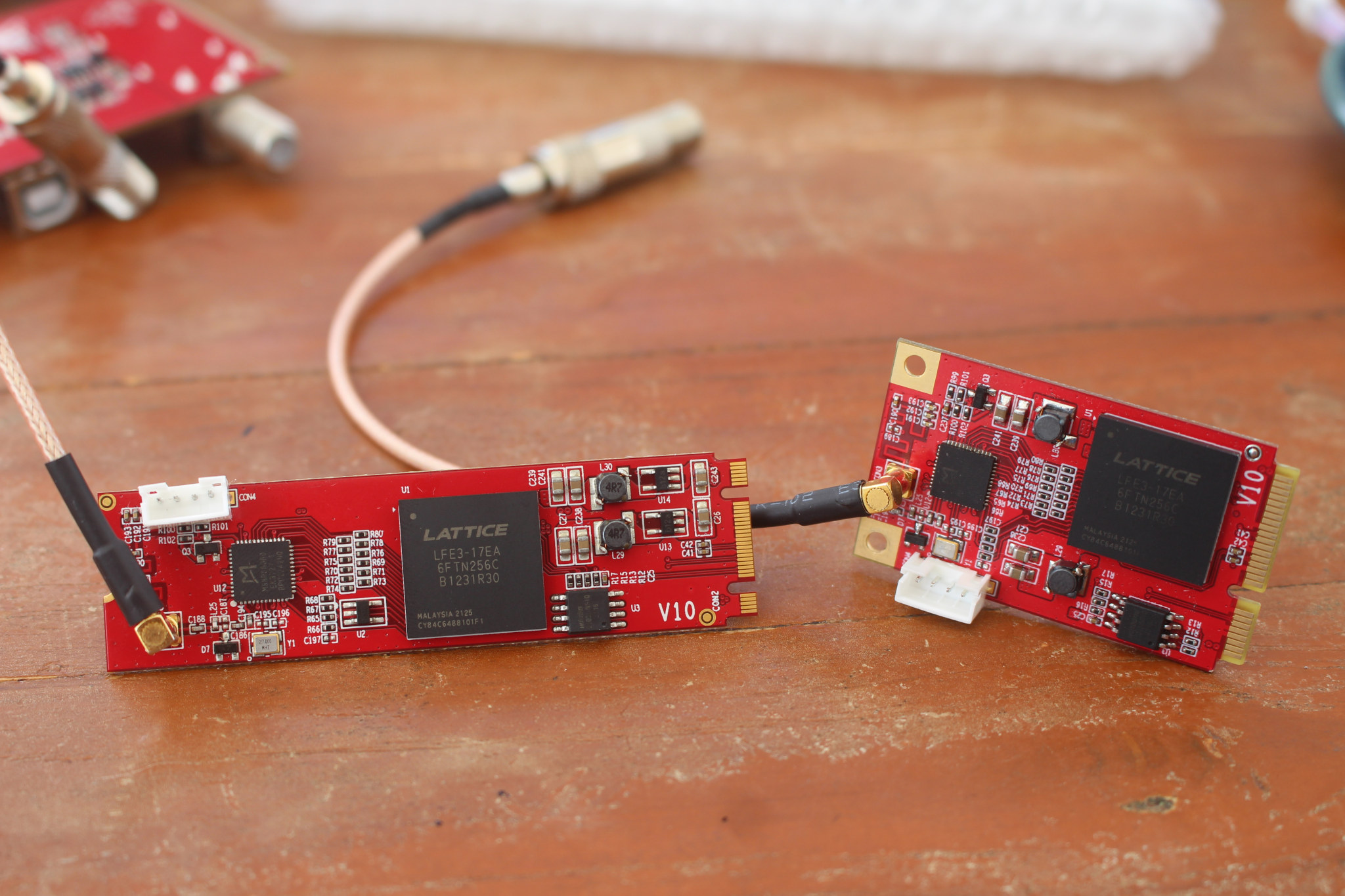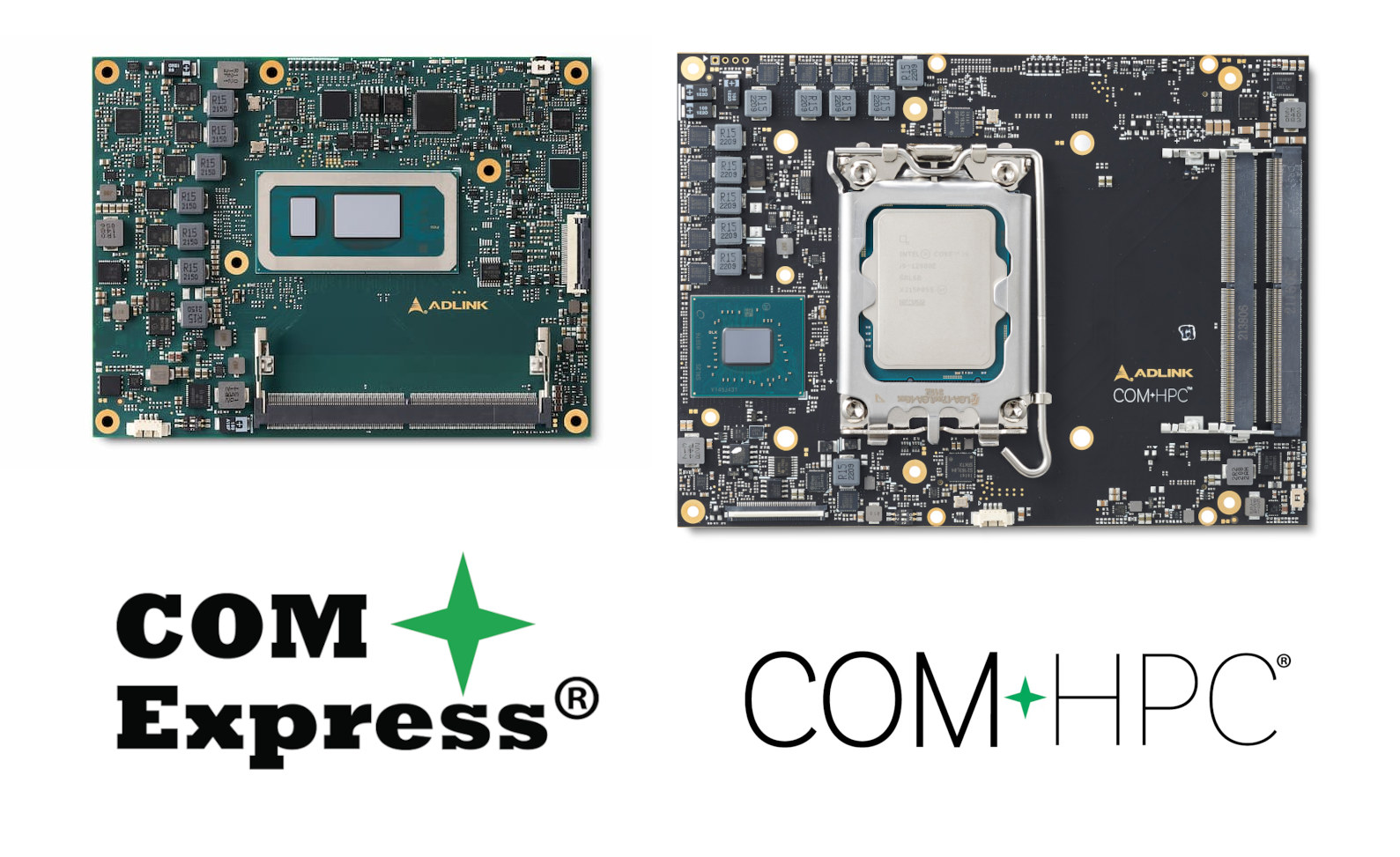PICMG has announced the release of the COM-HPC 1.2 specification adding the COM-HPC Mini form factor that’s about the size of a credit card (90x75mm) or half the size of the next-smallest COM-HPC form factor but still provides access to high-speed interfaces such as PCIe Gen5, USB4, and 10GbE. The COM-HPC “High-Performance Computing” form factor was introduced a few years ago for more powerful CPUs (higher TDP) with support for PCIe Gen4 (the COM Express form factor can’t handle PCIe Gen 4 clock speeds and throughputs well), and until now four sizes were available with COM-HPC Client Type modules measuring 95 x 120mm (Size A) to 160 x 120mm (Size C) and Server Type modules having either 160 x 160mm (Size D) or 200 x 160mm (Size E) dimensions. The COM-HPC Mini brings a smaller (95 x 60 mm) credit card-sized form factor to the COM-HPC standard for applications such […]
Raspberry Pi releases RP1 peripheral controller datasheet and block diagram
The Raspberry Pi 5 was recently introduced with the Broadcom BCM2712 CPU and the RP1 chip handling I/Os designed in-house by the Raspberry Pi just like they did for the RP2 (RP2040) microcontroller, and we now have more details about the Raspberry Pi RP1 including a (draft) datasheet and a block diagram. The RP2040 came out before the RP1 peripheral controller as the design for the latter started 7 years ago with a total R&D budget to develop the Raspberry Pi 5 of around 25 million dollars. While at launch, we knew the RP1 handled some peripherals, doubled USB bandwidth with two separate USB 3.0 hosts, and embedded higher speed MIPI interfaces, it was unclear whether some of the other connections came from the BCM2712 or RP1 chips. But we now do know with the release of the datasheet. Raspberry Pi RP1 key features and specifications: MCU – Dual-arm Cortex-M3 […]
Sipeed Tang Mega 138K Pro Dock features GOWIN GW5AST FPGA + RISC-V SoC
Sipeed has launched another FPGA board part of their Tang family with the Tang Mega 138K Pro Dock powered by a GOWIN GW5AST SoC with 138K logic elements as well as an 800 MHz AE350_SOC RISC-V hardcore unit, and featuring a PCIe 3.0 x4 interface, DVI Rx and Tx, two SFP+ cages, a Gigabit Ethernet RJ45 port, and more. We’ve previously seen companies like AMD (Xilinx) and Microchip produce FPGA SoCs with hard cores such as the Zynq Ultrascale+ family (4x Cortex-A53) or the PolarFire MPSoC (4x 64-bit SiFive U54 RISC-V cores), but it’s the first time I see GOWIN introduce an FPGA + RISC-V SoC, as all the previous parts that came to my attention were FPGA devices. Sipeed Tang Mega 138K Pro Dock specifications: System-on-Module – Sipeed Tang Mega 138K Pro SoC FPGA – GOWIN GW5AST-LV138FPG676A with 138,240 LUT4 1,080 Kb Shadow SRAM (SSRAM) 6,120 Kb Block SRAM […]
ZimaBlade – A $64+ low-profile Intel Celeron board for server applications and more (Crowdfunding)
ZimaBlade is an inexpensive low-profile board based on an Intel Celeron dual-core or quad-core processor and designed for server applications with a low-profile RJ45 Gigabit Ethernet port, two SATA connectors, and a PCIe slot, but not only as the board also comes with display interfaces such as mini DP and USB-C DisplayPort Alt. mode and a few USB ports. It’s not IceWhale Technology’s first venture into portable server board as the company previously introduced the Zimaboard based on Intel Celeron Apollo Lake processors with many of the same features back in 2021. The new ZimaBlade offers more interfaces as well as a complete enclosure instead of just a large heatsink. ZimaBlade specifications: SoC (one or the other) ZimaBlade 3760 – Intel Celeron dual-core processor up to 2.2 GHz (Turbo) with Intel UHD graphics; 6W TDP ZimaBlade 7700 – Intel Celeron quad-core processor up to 2.4 GHz (Turbo) with Intel UHD […]
ESP32-S3-BOX-3 devkit comes with 2.4-inch display, dual microphone, PCIe expansion connector
Espressif Systems has launched an update to their ESP32-S3-Box development kit for online and offline voice assistants with the ESP32-S3-BOX-3 devkit that still features a 2.4-inch capacitive touchscreen display with 320×240 resolution, two microphones, a built-in speaker, and a USB-C port, but replaces the PMOD connector by a PCIe connector for various expansion modules. The open-source ESP32-S3 development kit is powered by the ESP32-S3 SoC with AI extensions and can be used to implement all sorts of solutions using the company’s ESP-SR, ESP RainMaker, and Matter solutions such as an offline voice assistant, a chatbot powered by ChatGPT, a handheld gaming console, a tiny robot, a Matter-compatible Smart Home hub, and more. ESP32-S3-BOX-3 specifications: WiSoC – ESP32-S3 dual-core Tensilica LX7 up to 240 MHz with Wi-Fi 4 & Bluetooth 5, AI instructions, 512KB SRAM Memory and Storage – 16MB octal PSRAM and 16MB QSPI flash Display – 2.4-inch capacitive touchscreen […]
Cincoze DS-1400 series embedded computers feature 12th Gen Alder Lake-S processors, PCIe expansion slots
Cincoze DS-1400 series rugged embedded computer comes with a choice of 12th Gen Alder Lake-S processor, up to 64GB DDR5 ECC memory, supports two 2.5-inch SATA drives, as well as mSATA and NVMe SSD storage, and up to two PCIe expansion slots. The embedded computers also come with two Gigabit Ethernet ports, support up to four independent displays via HDMI, DisplayPort, and VGA interfaces, feature eight USB ports, two RS232/422/485 DB9 connectors, and offer 9V to 48V DC input for industrial applications. Cincoze DS-1400 specifications: SoC – 12th Gen Alder Lake-S processor (one or the other) Intel Core i9-12900E 16 cores up to 5 GHz with Intel UHD Graphics 770; TDP: 65W Intel Core i7-12700E 12 cores up to 4.8 GHz with Intel UHD Graphics 770; TDP: 65W Intel Core i5-12500E 6 cores up to 4.5 GHz with Intel UHD Graphics 770; TDP: 65W Intel Core i3-12100E 4 cores […]
M.2/mini PCIe card adds DVB-S2X/S2 tuner to desktop PCs and (some) SBC’s
TBS has designed two small DVB-S2X/S2/S tuner cards with the TBS7230 M.2 module and TBS7901 mini PCIe module designed to easily add DTB support to a desktop PC or even a single board computer with the right interfaces. Both models are based on a Lattice Semi LFE3-17EA-6FTN256C FPGA and Montage LZ M88RS6060 single-chip DVB-S2X/S2/S receiver with a tuner, a demodulator, and an LNB controller, but as I understand it, the mPCIe module relies on a USB PCIe (see comments section) interface, while the M.2 module features a PCIe interface and you can even install more than one in a PC through a PCIe card for NVMe drives. TBS7901 specifications: Host interface – Mini PCIe edge connector Tuner DVB-S2X/S2/S DVB-S2 QPSK – 1/2, 3/5, 2/3, 3/4, 4/5, 5/6, 8/9, 9/10 8PSK – 3/5, 2/3, 3/4, 5/6, 8/9, 9/10 16APSK – 2/3, 3/4, 4/5, 5/6, 8/9, 9/10 32APSK – 3/4, 4/5, 5/6, […]
Selecting Raptor Lake COM-HPC or COM Express modules for your application (Sponsored)
ADLINK Technology introduced the COM-HPC-cRLS (Raptor Lake-S) COM-HPC size C module and Express-RLP Raptor Lake-P COM Express Type 6 module at the beginning of the year, and while we covered the specifications for both in detail at the time of the announcement, we’ll compare the advantages and benefits of the two types of 13th generation Raptor Lake modules in this post and compare 12th gen Alder Lake-S and 13th Gen Raptor Lake-S processor performance to help potential buyers select the right one for their applications. Raptor Lake COM-HPC vs COM Express vs modules The table above provides a high-level comparison between the COM-HPC-cRLS (Raptor Lake-S) and the Express-RLP (Raptor Lake-P) modules. The Raptor Lake-S socketed processor family found in the COM-HPC provides more processing power, supports up to 128GB DDR5, and the COM-HPC standard adds support for PCIe Gen5 which is not possible with the COM Express standard. The Raptor […]


